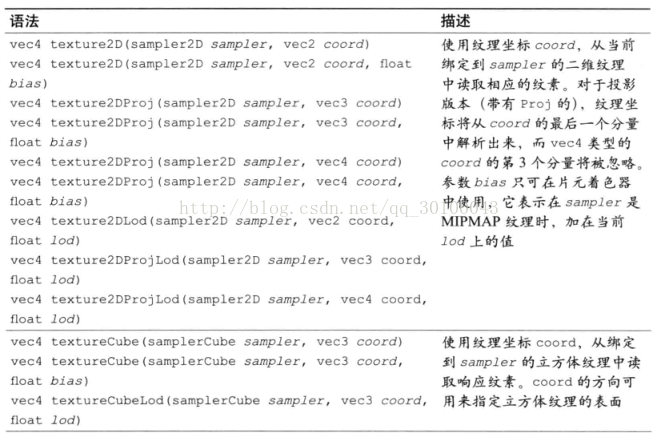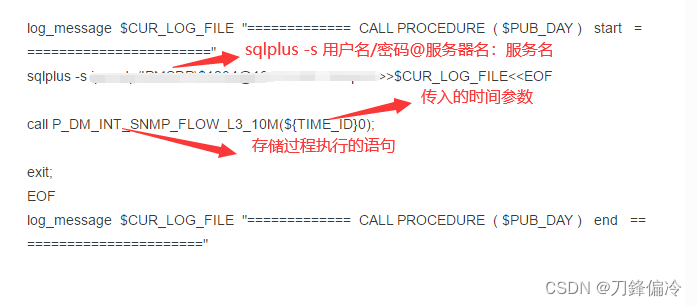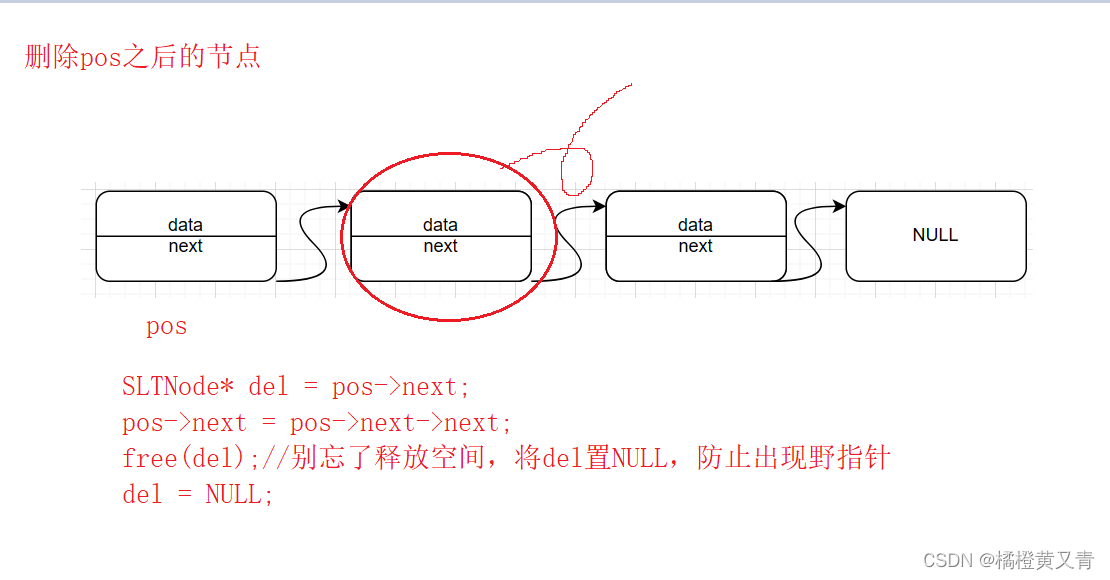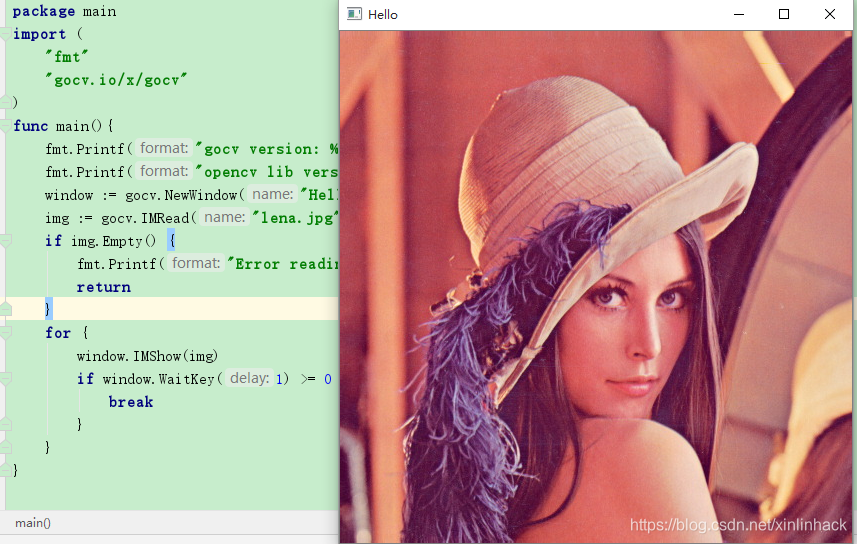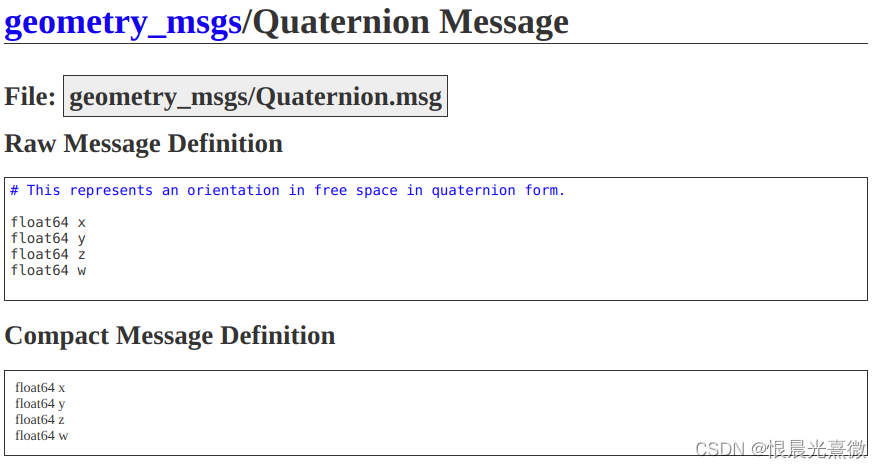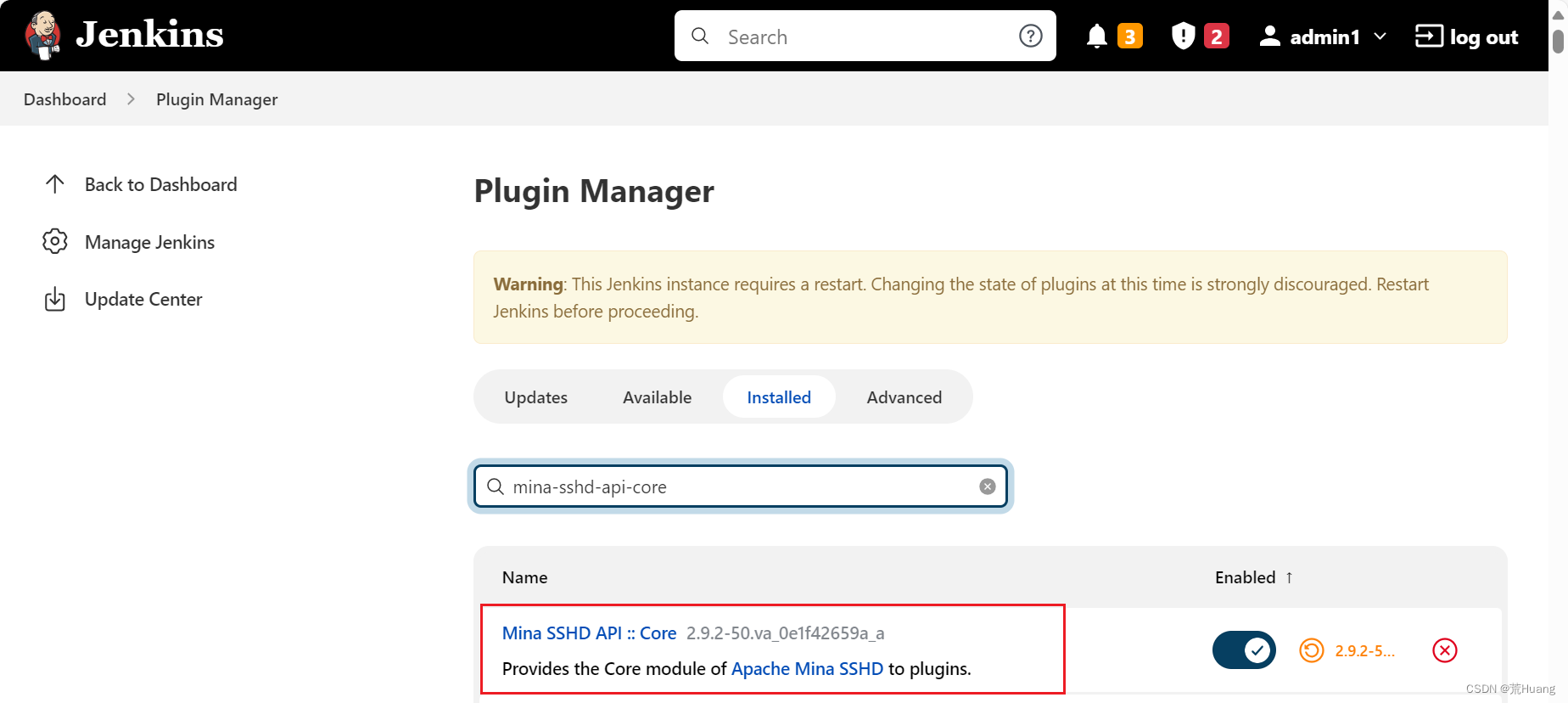一、NIO三大组件
NIO的三大组件分别是Channel,Buffer与Selector
Java NIO系统的核心在于:通道(Channel)和缓冲区(Buffer)。通道表示打开到 IO 设备(例如:文件、套接字)的连接。若需要使用 NIO 系统,需要获取用于连接 IO 设备的通道以及用于容纳数据的缓冲区。然后操作缓冲区,对数据进行处理
简而言之,通道负责传输,缓冲区负责存储
常见的Channel有以下四种,其中FileChannel主要用于文件传输,其余三种用于网络通信
- FileChannel
- DatagramChannel
- SocketChannel
- ServerSocketChannel
Buffer有以下几种,其中使用较多的是ByteBuffer
- ByteBuffer
- MappedByteBuffer
- DirectByteBuffer
- HeapByteBuffer
- ShortBuffer
- IntBuffer
- LongBuffer
- FloatBuffer
- DoubleBuffer
- CharBuffer
1、Selector
在使用Selector之前,处理socket连接还有以下两种方法
1.使用多线程技术
为每个连接分别开辟一个线程,分别去处理对应的socke连接
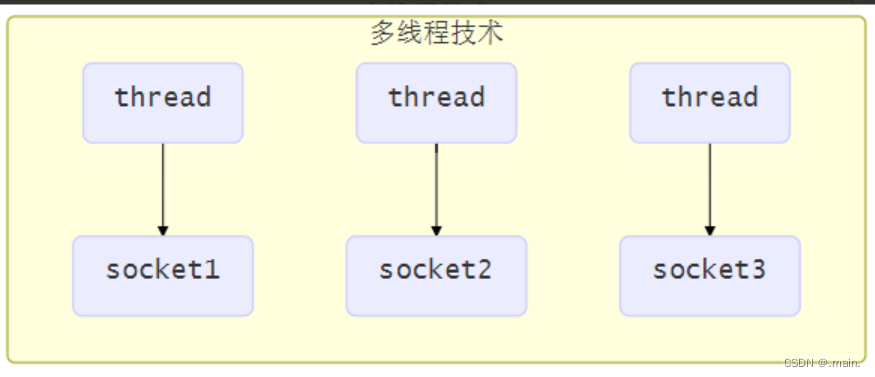
这种方法存在以下几个问题
- 内存占用高
- 每个线程都需要占用一定的内存,当连接较多时,会开辟大量线程,导致占用大量内存
- 线程上下文切换成本高
- 只适合连接数少的场景
- 连接数过多,会导致创建很多线程,从而出现问题
2.使用线程池技术
使用线程池,让线程池中的线程去处理连接

这种方法存在以下几个问题
- 阻塞模式下,线程仅能处理一个连接
- 线程池中的线程获取任务(task)后,只有当其执行完任务之后(断开连接后),才会去获取并执行下一个任务
- 若socke连接一直未断开,则其对应的线程无法处理其他socke连接
- 仅适合短连接场景
- 短连接即建立连接发送请求并响应后就立即断开,使得线程池中的线程可以快速处理其他连接
3.使用选择器
selector 的作用就是配合一个线程来管理多个 channel(fileChannel因为是阻塞式的,所以无法使用selector),获取这些 channel 上发生的事件,这些 channel 工作在非阻塞模式下,当一个channel中没有执行任务时,可以去执行其他channel中的任务。适合连接数多,但流量较少的场景

若事件未就绪,调用 selector 的 select() 方法会阻塞线程,直到 channel 发生了就绪事件。这些事件就绪后,select 方法就会返回这些事件交给 thread 来处理
2、ByteBuffer
使用案例
使用方式
- 向 buffer 写入数据,例如调用 channel.read(buffer)
- 调用 flip() 切换至读模式
- flip会使得buffer中的limit变为position,position变为0
- 从 buffer 读取数据,例如调用 buffer.get()
- 调用 clear() 或者compact()切换至写模式
- 调用clear()方法时position=0,limit变为capacity
- 调用compact()方法时,会将缓冲区中的未读数据压缩到缓冲区前面
- 重复以上步骤
使用ByteBuffer读取文件中的内容
public class TestByteBuffer {public static void main(String[] args) {// 获得FileChanneltry (FileChannel channel = new FileInputStream("stu.txt").getChannel()) {// 获得缓冲区ByteBuffer buffer = ByteBuffer.allocate(10);int hasNext = 0;StringBuilder builder = new StringBuilder();while((hasNext = channel.read(buffer)) > 0) {// 切换模式 limit=position, position=0buffer.flip();// 当buffer中还有数据时,获取其中的数据while(buffer.hasRemaining()) {builder.append((char)buffer.get());}// 切换模式 position=0, limit=capacitybuffer.clear();}System.out.println(builder.toString());} catch (IOException e) {}}
}打印结果
核心属性
0123456789abcdef字节缓冲区的父类Buffer中有几个核心属性,如下
// Invariants: mark <= position <= limit <= capacity
private int mark = -1;
private int position = 0;
private int limit;
private int capacity;- capacity:缓冲区的容量。通过构造函数赋予,一旦设置,无法更改
- limit:缓冲区的界限。位于limit 后的数据不可读写。缓冲区的限制不能为负,并且不能大于其容量
- position:下一个读写位置的索引(类似PC)。缓冲区的位置不能为负,并且不能大于limit
- mark:记录当前position的值。position被改变后,可以通过调用reset() 方法恢复到mark的位置。
以上四个属性必须满足以下要求
mark <= position <= limit <= capacity
核心方法
ut()方法
- put()方法可以将一个数据放入到缓冲区中。
- 进行该操作后,postition的值会+1,指向下一个可以放入的位置。capacity = limit ,为缓冲区容量的值。

flip()方法
- flip()方法会切换对缓冲区的操作模式,由写->读 / 读->写
- 进行该操作后
- 如果是写模式->读模式,position = 0 , limit 指向最后一个元素的下一个位置,capacity不变
- 如果是读->写,则恢复为put()方法中的值

get()方法
- get()方法会读取缓冲区中的一个值
- 进行该操作后,position会+1,如果超过了limit则会抛出异常
- 注意:get(i)方法不会改变position的值
如果想通过get方法重复读取数据
- 可以调用rewind方法讲position重新置为0
- 或者调用get(int i)方法获取索引 i 的内容,它不会移动读指针

rewind()方法
- 该方法只能在读模式下使用
- rewind()方法后,会恢复position、limit和capacity的值,变为进行get()前的值

clean()方法
- clean()方法会将缓冲区中的各个属性恢复为最初的状态,position = 0, capacity = limit
- 此时缓冲区的数据依然存在,处于“被遗忘”状态,下次进行写操作时会覆盖这些数据

mark()和reset()方法
- mark()方法会将postion的值保存到mark属性中
- reset()方法会将position的值改为mark中保存的值
compact()方法
此方法为ByteBuffer的方法,而不是Buffer的方法
- compact会把未读完的数据向前压缩,然后切换到写模式
- 数据前移后,原位置的值并未清零,写时会覆盖之前的值

clear() VS compact()
clear只是对position、limit、mark进行重置,而compact在对position进行设置,以及limit、mark进行重置的同时,还涉及到数据在内存中拷贝(会调用arraycopy)。所以compact比clear更耗性能。但compact能保存你未读取的数据,将新数据追加到为读取的数据之后;而clear则不行,若你调用了clear,则未读取的数据就无法再读取到了
ByteBuffer.allocate() 与 ByteBuffer.allocateDirect()
allocate()方法返回类型是 class java.nio .HeapByteBuffer
HeapByteBuffer 使用的是 java 堆内存,读写效率较低,受到GC的影响
allocateDirect() 方法返回类型是 class java.nio .DirectByteBuffer
DirectByteBuffer 使用的是直接内存, 读写效率高(少一次拷贝),不会受GC影响,但是分配的效率低(因为需要调用系统的分配内存相关接口),而且使用不当会造成内存泄漏
所以需要根据情况来判断使用哪种方法进行模式切换
方法调用及演示
ByteBuffer调试工具类
需要先导入netty依赖
<dependency><groupId>io.netty</groupId><artifactId>netty-all</artifactId><version>4.1.51.Final</version>
</dependency>创建一个工具类,便于观察ByteBuffer的内部结构
import java.nio.ByteBuffer;import io.netty.util.internal.MathUtil;
import io.netty.util.internal.StringUtil;
import io.netty.util.internal.MathUtil.*;/*** @author qingm* @date 2024/1/12 15:59*/
public class ByteBufferUtil {private static final char[] BYTE2CHAR = new char[256];private static final char[] HEXDUMP_TABLE = new char[256 * 4];private static final String[] HEXPADDING = new String[16];private static final String[] HEXDUMP_ROWPREFIXES = new String[65536 >>> 4];private static final String[] BYTE2HEX = new String[256];private static final String[] BYTEPADDING = new String[16];static {final char[] DIGITS = "0123456789abcdef".toCharArray();for (int i = 0; i < 256; i++) {HEXDUMP_TABLE[i << 1] = DIGITS[i >>> 4 & 0x0F];HEXDUMP_TABLE[(i << 1) + 1] = DIGITS[i & 0x0F];}int i;// Generate the lookup table for hex dump paddingsfor (i = 0; i < HEXPADDING.length; i++) {int padding = HEXPADDING.length - i;StringBuilder buf = new StringBuilder(padding * 3);for (int j = 0; j < padding; j++) {buf.append(" ");}HEXPADDING[i] = buf.toString();}// Generate the lookup table for the start-offset header in each row (up to 64KiB).for (i = 0; i < HEXDUMP_ROWPREFIXES.length; i++) {StringBuilder buf = new StringBuilder(12);buf.append(StringUtil.NEWLINE);buf.append(Long.toHexString(i << 4 & 0xFFFFFFFFL | 0x100000000L));buf.setCharAt(buf.length() - 9, '|');buf.append('|');HEXDUMP_ROWPREFIXES[i] = buf.toString();}// Generate the lookup table for byte-to-hex-dump conversionfor (i = 0; i < BYTE2HEX.length; i++) {BYTE2HEX[i] = ' ' + StringUtil.byteToHexStringPadded(i);}// Generate the lookup table for byte dump paddingsfor (i = 0; i < BYTEPADDING.length; i++) {int padding = BYTEPADDING.length - i;StringBuilder buf = new StringBuilder(padding);for (int j = 0; j < padding; j++) {buf.append(' ');}BYTEPADDING[i] = buf.toString();}// Generate the lookup table for byte-to-char conversionfor (i = 0; i < BYTE2CHAR.length; i++) {if (i <= 0x1f || i >= 0x7f) {BYTE2CHAR[i] = '.';} else {BYTE2CHAR[i] = (char) i;}}}/*** 打印所有内容* @param buffer*/public static void debugAll(ByteBuffer buffer) {int oldlimit = buffer.limit();buffer.limit(buffer.capacity());StringBuilder origin = new StringBuilder(256);appendPrettyHexDump(origin, buffer, 0, buffer.capacity());System.out.println("+--------+-------------------- all ------------------------+----------------+");System.out.printf("position: [%d], limit: [%d]\n", buffer.position(), oldlimit);System.out.println(origin);buffer.limit(oldlimit);}/*** 打印可读取内容* @param buffer*/public static void debugRead(ByteBuffer buffer) {StringBuilder builder = new StringBuilder(256);appendPrettyHexDump(builder, buffer, buffer.position(), buffer.limit() - buffer.position());System.out.println("+--------+-------------------- read -----------------------+----------------+");System.out.printf("position: [%d], limit: [%d]\n", buffer.position(), buffer.limit());System.out.println(builder);}private static void appendPrettyHexDump(StringBuilder dump, ByteBuffer buf, int offset, int length) {if (MathUtil.isOutOfBounds(offset, length, buf.capacity())) {throw new IndexOutOfBoundsException("expected: " + "0 <= offset(" + offset + ") <= offset + length(" + length+ ") <= " + "buf.capacity(" + buf.capacity() + ')');}if (length == 0) {return;}dump.append(" +-------------------------------------------------+" +StringUtil.NEWLINE + " | 0 1 2 3 4 5 6 7 8 9 a b c d e f |" +StringUtil.NEWLINE + "+--------+-------------------------------------------------+----------------+");final int startIndex = offset;final int fullRows = length >>> 4;final int remainder = length & 0xF;// Dump the rows which have 16 bytes.for (int row = 0; row < fullRows; row++) {int rowStartIndex = (row << 4) + startIndex;// Per-row prefix.appendHexDumpRowPrefix(dump, row, rowStartIndex);// Hex dumpint rowEndIndex = rowStartIndex + 16;for (int j = rowStartIndex; j < rowEndIndex; j++) {dump.append(BYTE2HEX[getUnsignedByte(buf, j)]);}dump.append(" |");// ASCII dumpfor (int j = rowStartIndex; j < rowEndIndex; j++) {dump.append(BYTE2CHAR[getUnsignedByte(buf, j)]);}dump.append('|');}// Dump the last row which has less than 16 bytes.if (remainder != 0) {int rowStartIndex = (fullRows << 4) + startIndex;appendHexDumpRowPrefix(dump, fullRows, rowStartIndex);// Hex dumpint rowEndIndex = rowStartIndex + remainder;for (int j = rowStartIndex; j < rowEndIndex; j++) {dump.append(BYTE2HEX[getUnsignedByte(buf, j)]);}dump.append(HEXPADDING[remainder]);dump.append(" |");// Ascii dumpfor (int j = rowStartIndex; j < rowEndIndex; j++) {dump.append(BYTE2CHAR[getUnsignedByte(buf, j)]);}dump.append(BYTEPADDING[remainder]);dump.append('|');}dump.append(StringUtil.NEWLINE +"+--------+-------------------------------------------------+----------------+");}private static void appendHexDumpRowPrefix(StringBuilder dump, int row, int rowStartIndex) {if (row < HEXDUMP_ROWPREFIXES.length) {dump.append(HEXDUMP_ROWPREFIXES[row]);} else {dump.append(StringUtil.NEWLINE);dump.append(Long.toHexString(rowStartIndex & 0xFFFFFFFFL | 0x100000000L));dump.setCharAt(dump.length() - 9, '|');dump.append('|');}}public static short getUnsignedByte(ByteBuffer buffer, int index) {return (short) (buffer.get(index) & 0xFF);}
}调用ByteBuffer的方法
public class TestByteBuffer {public static void main(String[] args) {ByteBuffer buffer = ByteBuffer.allocate(10);// 向buffer中写入1个字节的数据buffer.put((byte)97);// 使用工具类,查看buffer状态ByteBufferUtil.debugAll(buffer);// 向buffer中写入4个字节的数据buffer.put(new byte[]{98, 99, 100, 101});ByteBufferUtil.debugAll(buffer);// 获取数据buffer.flip();ByteBufferUtil.debugAll(buffer);System.out.println(buffer.get());System.out.println(buffer.get());ByteBufferUtil.debugAll(buffer);// 使用compact切换模式buffer.compact();ByteBufferUtil.debugAll(buffer);// 再次写入buffer.put((byte)102);buffer.put((byte)103);ByteBufferUtil.debugAll(buffer);}
}运行结果
// 向缓冲区写入了一个字节的数据,此时postition为1 +--------+-------------------- all ------------------------+----------------+ position: [1], limit: [10]+-------------------------------------------------+| 0 1 2 3 4 5 6 7 8 9 a b c d e f | +--------+-------------------------------------------------+----------------+ |00000000| 61 00 00 00 00 00 00 00 00 00 |a......... | +--------+-------------------------------------------------+----------------+// 向缓冲区写入四个字节的数据,此时position为5 +--------+-------------------- all ------------------------+----------------+ position: [5], limit: [10]+-------------------------------------------------+| 0 1 2 3 4 5 6 7 8 9 a b c d e f | +--------+-------------------------------------------------+----------------+ |00000000| 61 62 63 64 65 00 00 00 00 00 |abcde..... | +--------+-------------------------------------------------+----------------+// 调用flip切换模式,此时position为0,表示从第0个数据开始读取 +--------+-------------------- all ------------------------+----------------+ position: [0], limit: [5]+-------------------------------------------------+| 0 1 2 3 4 5 6 7 8 9 a b c d e f | +--------+-------------------------------------------------+----------------+ |00000000| 61 62 63 64 65 00 00 00 00 00 |abcde..... | +--------+-------------------------------------------------+----------------+ // 读取两个字节的数据 97 98// position变为2 +--------+-------------------- all ------------------------+----------------+ position: [2], limit: [5]+-------------------------------------------------+| 0 1 2 3 4 5 6 7 8 9 a b c d e f | +--------+-------------------------------------------------+----------------+ |00000000| 61 62 63 64 65 00 00 00 00 00 |abcde..... | +--------+-------------------------------------------------+----------------+// 调用compact切换模式,此时position及其后面的数据被压缩到ByteBuffer前面去了 // 此时position为3,会覆盖之前的数据 +--------+-------------------- all ------------------------+----------------+ position: [3], limit: [10]+-------------------------------------------------+| 0 1 2 3 4 5 6 7 8 9 a b c d e f | +--------+-------------------------------------------------+----------------+ |00000000| 63 64 65 64 65 00 00 00 00 00 |cdede..... | +--------+-------------------------------------------------+----------------+// 再次写入两个字节的数据,之前的 0x64 0x65 被覆盖 +--------+-------------------- all ------------------------+----------------+ position: [5], limit: [10]+-------------------------------------------------+| 0 1 2 3 4 5 6 7 8 9 a b c d e f | +--------+-------------------------------------------------+----------------+ |00000000| 63 64 65 66 67 00 00 00 00 00 |cdefg..... | +--------+-------------------------------------------------+----------------+
字符串与ByteBuffer的相互转换
方法一
编码:字符串调用getByte方法获得byte数组,将byte数组放入ByteBuffer中
解码:先调用ByteBuffer的flip方法,然后通过StandardCharsets的decoder方法解码
public class Translate {public static void main(String[] args) {// 准备两个字符串String str1 = "hello";String str2 = "";ByteBuffer buffer1 = ByteBuffer.allocate(16);// 通过字符串的getByte方法获得字节数组,放入缓冲区中buffer1.put(str1.getBytes());ByteBufferUtil.debugAll(buffer1);// 将缓冲区中的数据转化为字符串// 切换模式buffer1.flip();// 通过StandardCharsets解码,获得CharBuffer,再通过toString获得字符串str2 = StandardCharsets.UTF_8.decode(buffer1).toString();System.out.println(str2);ByteBufferUtil.debugAll(buffer1);}
}运行结果
+--------+-------------------- all ------------------------+----------------+
position: [5], limit: [16]+-------------------------------------------------+| 0 1 2 3 4 5 6 7 8 9 a b c d e f |
+--------+-------------------------------------------------+----------------+
|00000000| 68 65 6c 6c 6f 00 00 00 00 00 00 00 00 00 00 00 |hello...........|
+--------+-------------------------------------------------+----------------+
hello
+--------+-------------------- all ------------------------+----------------+
position: [5], limit: [5]+-------------------------------------------------+| 0 1 2 3 4 5 6 7 8 9 a b c d e f |
+--------+-------------------------------------------------+----------------+
|00000000| 68 65 6c 6c 6f 00 00 00 00 00 00 00 00 00 00 00 |hello...........|
+--------+-------------------------------------------------+----------------+Copy方法二
编码:通过StandardCharsets的encode方法获得ByteBuffer,此时获得的ByteBuffer为读模式,无需通过flip切换模式
解码:通过StandardCharsets的decoder方法解码
public class Translate {public static void main(String[] args) {// 准备两个字符串String str1 = "hello";String str2 = "";// 通过StandardCharsets的encode方法获得ByteBuffer// 此时获得的ByteBuffer为读模式,无需通过flip切换模式ByteBuffer buffer1 = StandardCharsets.UTF_8.encode(str1);ByteBufferUtil.debugAll(buffer1);// 将缓冲区中的数据转化为字符串// 通过StandardCharsets解码,获得CharBuffer,再通过toString获得字符串str2 = StandardCharsets.UTF_8.decode(buffer1).toString();System.out.println(str2);ByteBufferUtil.debugAll(buffer1);}
}运行结果
+--------+-------------------- all ------------------------+----------------+
position: [0], limit: [5]+-------------------------------------------------+| 0 1 2 3 4 5 6 7 8 9 a b c d e f |
+--------+-------------------------------------------------+----------------+
|00000000| 68 65 6c 6c 6f |hello |
+--------+-------------------------------------------------+----------------+
hello
+--------+-------------------- all ------------------------+----------------+
position: [5], limit: [5]+-------------------------------------------------+| 0 1 2 3 4 5 6 7 8 9 a b c d e f |
+--------+-------------------------------------------------+----------------+
|00000000| 68 65 6c 6c 6f |hello |
+--------+-------------------------------------------------+----------------+Copy方法三
编码:字符串调用getByte()方法获得字节数组,将字节数组传给ByteBuffer的wrap()方法,通过该方法获得ByteBuffer。同样无需调用flip方法切换为读模式
解码:通过StandardCharsets的decoder方法解码
public class Translate {public static void main(String[] args) {// 准备两个字符串String str1 = "hello";String str2 = "";// 通过StandardCharsets的encode方法获得ByteBuffer// 此时获得的ByteBuffer为读模式,无需通过flip切换模式ByteBuffer buffer1 = ByteBuffer.wrap(str1.getBytes());ByteBufferUtil.debugAll(buffer1);// 将缓冲区中的数据转化为字符串// 通过StandardCharsets解码,获得CharBuffer,再通过toString获得字符串str2 = StandardCharsets.UTF_8.decode(buffer1).toString();System.out.println(str2);ByteBufferUtil.debugAll(buffer1);}
}运行结果
+--------+-------------------- all ------------------------+----------------+
position: [0], limit: [5]+-------------------------------------------------+| 0 1 2 3 4 5 6 7 8 9 a b c d e f |
+--------+-------------------------------------------------+----------------+
|00000000| 68 65 6c 6c 6f |hello |
+--------+-------------------------------------------------+----------------+
hello
+--------+-------------------- all ------------------------+----------------+
position: [5], limit: [5]+-------------------------------------------------+| 0 1 2 3 4 5 6 7 8 9 a b c d e f |
+--------+-------------------------------------------------+----------------+
|00000000| 68 65 6c 6c 6f |hello |
+--------+-------------------------------------------------+----------------+粘包与半包
现象
网络上有多条数据发送给服务端,数据之间使用 \n 进行分隔
但由于某种原因这些数据在接收时,被进行了重新组合,例如原始数据有3条为
- Hello,world\n
- I’m Nyima\n
- How are you?\n
变成了下面的两个 byteBuffer (粘包,半包)
- Hello,world\nI’m Nyima\nHo
- w are you?\n
出现原因
粘包
发送方在发送数据时,并不是一条一条地发送数据,而是将数据整合在一起,当数据达到一定的数量后再一起发送。这就会导致多条信息被放在一个缓冲区中被一起发送出去
半包
接收方的缓冲区的大小是有限的,当接收方的缓冲区满了以后,就需要将信息截断,等缓冲区空了以后再继续放入数据。这就会发生一段完整的数据最后被截断的现象
解决办法
- 通过get(index)方法遍历ByteBuffer,遇到分隔符时进行处理。注意:get(index)不会改变position的值
- 记录该段数据长度,以便于申请对应大小的缓冲区
- 将缓冲区的数据通过get()方法写入到target中
- 调用compact方法切换模式,因为缓冲区中可能还有未读的数据
public class ByteBufferDemo {public static void main(String[] args) {ByteBuffer buffer = ByteBuffer.allocate(32);// 模拟粘包+半包buffer.put("Hello,world\nI'm Nyima\nHo".getBytes());// 调用split函数处理split(buffer);buffer.put("w are you?\n".getBytes());split(buffer);}private static void split(ByteBuffer buffer) {// 切换为读模式buffer.flip();for(int i = 0; i < buffer.limit(); i++) {// 遍历寻找分隔符// get(i)不会移动positionif (buffer.get(i) == '\n') {// 缓冲区长度int length = i+1-buffer.position();ByteBuffer target = ByteBuffer.allocate(length);// 将前面的内容写入target缓冲区for(int j = 0; j < length; j++) {// 将buffer中的数据写入target中target.put(buffer.get());}// 打印查看结果ByteBufferUtil.debugAll(target);}}// 切换为写模式,但是缓冲区可能未读完,这里需要使用compactbuffer.compact();}
}运行结果
+--------+-------------------- all ------------------------+----------------+
position: [12], limit: [12]+-------------------------------------------------+| 0 1 2 3 4 5 6 7 8 9 a b c d e f |
+--------+-------------------------------------------------+----------------+
|00000000| 48 65 6c 6c 6f 2c 77 6f 72 6c 64 0a |Hello,world. |
+--------+-------------------------------------------------+----------------+
+--------+-------------------- all ------------------------+----------------+
position: [10], limit: [10]+-------------------------------------------------+| 0 1 2 3 4 5 6 7 8 9 a b c d e f |
+--------+-------------------------------------------------+----------------+
|00000000| 49 27 6d 20 4e 79 69 6d 61 0a |I'm Nyima. |
+--------+-------------------------------------------------+----------------+
+--------+-------------------- all ------------------------+----------------+
position: [13], limit: [13]+-------------------------------------------------+| 0 1 2 3 4 5 6 7 8 9 a b c d e f |
+--------+-------------------------------------------------+----------------+
|00000000| 48 6f 77 20 61 72 65 20 79 6f 75 3f 0a |How are you?. |
+--------+-------------------------------------------------+----------------+二、文件编程
1、FileChannel
工作模式
FileChannel只能在阻塞模式下工作,所以无法搭配Selector
获取
不能直接打开 FileChannel,必须通过 FileInputStream、FileOutputStream 或者 RandomAccessFile 来获取 FileChannel,它们都有 getChannel 方法
- 通过 FileInputStream 获取的 channel 只能读
- 通过 FileOutputStream 获取的 channel 只能写
- 通过 RandomAccessFile 是否能读写根据构造 RandomAccessFile 时的读写模式决定
读取
通过 FileInputStream 获取channel,通过read方法将数据写入到ByteBuffer中
read方法的返回值表示读到了多少字节,若读到了文件末尾则返回-1
int readBytes = channel.read(buffer);Copy可根据返回值判断是否读取完毕
while(channel.read(buffer) > 0) {// 进行对应操作...
}写入
因为channel也是有大小的,所以 write 方法并不能保证一次将 buffer 中的内容全部写入 channel。必须需要按照以下规则进行写入
// 通过hasRemaining()方法查看缓冲区中是否还有数据未写入到通道中
while(buffer.hasRemaining()) {channel.write(buffer);
}关闭
通道需要close,一般情况通过try-with-resource进行关闭,最好使用以下方法获取strea以及channel,避免某些原因使得资源未被关闭
public class TestChannel {public static void main(String[] args) throws IOException {try (FileInputStream fis = new FileInputStream("stu.txt");FileOutputStream fos = new FileOutputStream("student.txt");FileChannel inputChannel = fis.getChannel();FileChannel outputChannel = fos.getChannel()) {// 执行对应操作...}}
}位置
position
channel也拥有一个保存读取数据位置的属性,即position
long pos = channel.position();可以通过position(int pos)设置channel中position的值
long newPos = ...;
channel.position(newPos);设置当前位置时,如果设置为文件的末尾
- 这时读取会返回 -1
- 这时写入,会追加内容,但要注意如果 position 超过了文件末尾,再写入时在新内容和原末尾之间会有空洞(00)
强制写入
操作系统出于性能的考虑,会将数据缓存,不是立刻写入磁盘,而是等到缓存满了以后将所有数据一次性的写入磁盘。可以调用 force(true) 方法将文件内容和元数据(文件的权限等信息)立刻写入磁盘
2、两个Channel传输数据
transferTo方法
使用transferTo方法可以快速、高效地将一个channel中的数据传输到另一个channel中,但一次只能传输2G的内容
transferTo底层使用了零拷贝技术
public class TestChannel {public static void main(String[] args){try (FileInputStream fis = new FileInputStream("stu.txt");FileOutputStream fos = new FileOutputStream("student.txt");FileChannel inputChannel = fis.getChannel();FileChannel outputChannel = fos.getChannel()) {// 参数:inputChannel的起始位置,传输数据的大小,目的channel// 返回值为传输的数据的字节数// transferTo一次只能传输2G的数据inputChannel.transferTo(0, inputChannel.size(), outputChannel);} catch (IOException e) {e.printStackTrace();}}
}当传输的文件大于2G时,需要使用以下方法进行多次传输
/*** 使用 fileChannel传输数据* 传输效率会更高 底层会利用操作系统的零拷贝进行优化*/
public class TestFileChannelTransferTo {public static void main(String[] args) {try (FileChannel from = new FileInputStream("data.txt").getChannel();FileChannel to = new FileOutputStream("toData.txt").getChannel()) {// 传输效率会更高 底层会利用操作系统的零拷贝进行优化 每次最大只能获取2G内容// 如果文件大于2g需要循环获取// left 代表还剩多少字节long size = from.size();for (long left = size ; left > 0;){System.out.println("position:" + (size -left) + "left:" + left);left -= from.transferTo(size - left, left, to);}} catch (IOException e) {e.printStackTrace();}}
}3、Path与Paths
- Path 用来表示文件路径
- Paths 是工具类,用来获取 Path 实例
Path source = Paths.get("1.txt"); // 相对路径 不带盘符 使用 user.dir 环境变量来定位 1.txtPath source = Paths.get("d:\\1.txt"); // 绝对路径 代表了 d:\1.txt 反斜杠需要转义Path source = Paths.get("d:/1.txt"); // 绝对路径 同样代表了 d:\1.txtPath projects = Paths.get("d:\\data", "projects"); // 代表了 d:\data\projects.代表了当前路径..代表了上一级路径
例如目录结构如下
d:|- data|- projects|- a|- b代码
Path path = Paths.get("d:\\data\\projects\\a\\..\\b");
System.out.println(path);
System.out.println(path.normalize()); // 正常化路径 会去除 . 以及 ..输出结果为
d:\data\projects\a\..\b
d:\data\projects\b4、Files
查找
检查文件是否存在
Path path = Paths.get("helloword/data.txt");
System.out.println(Files.exists(path));创建
创建一级目录
Path path = Paths.get("helloword/d1");
Files.createDirectory(path);- 如果目录已存在,会抛异常 FileAlreadyExistsException
- 不能一次创建多级目录,否则会抛异常 NoSuchFileException
创建多级目录用
Path path = Paths.get("helloword/d1/d2");
Files.createDirectories(path);拷贝及移动
拷贝文件
Path source = Paths.get("helloword/data.txt");
Path target = Paths.get("helloword/target.txt");Files.copy(source, target);- 如果文件已存在,会抛异常 FileAlreadyExistsException
如果希望用 source 覆盖掉 target,需要用 StandardCopyOption 来控制
Files.copy(source, target, StandardCopyOption.REPLACE_EXISTING);移动文件
Path source = Paths.get("helloword/data.txt");
Path target = Paths.get("helloword/data.txt");Files.move(source, target, StandardCopyOption.ATOMIC_MOVE);- StandardCopyOption.ATOMIC_MOVE 保证文件移动的原子性
删除
删除文件
Path target = Paths.get("helloword/target.txt");Files.delete(target);- 如果文件不存在,会抛异常 NoSuchFileException
删除目录
Path target = Paths.get("helloword/d1");Files.delete(target);- 如果目录还有内容,会抛异常 DirectoryNotEmptyException
遍历
可以使用Files工具类中的walkFileTree(Path, FileVisitor)方法,其中需要传入两个参数
- Path:文件起始路径
- FileVisitor:文件访问器,使用访问者模式
- 接口的实现类SimpleFileVisitor有四个方法
- preVisitDirectory:访问目录前的操作
- visitFile:访问文件的操作
- visitFileFailed:访问文件失败时的操作
- postVisitDirectory:访问目录后的操作
- 接口的实现类SimpleFileVisitor有四个方法
public class TestWalkFileTree {public static void main(String[] args) throws IOException {Path path = Paths.get("D:\\JDK 8");// 文件目录数目AtomicInteger dirCount = new AtomicInteger();// 文件数目AtomicInteger fileCount = new AtomicInteger();Files.walkFileTree(path, new SimpleFileVisitor<Path>(){@Overridepublic FileVisitResult preVisitDirectory(Path dir, BasicFileAttributes attrs) throws IOException {System.out.println("===>"+dir);// 增加文件目录数dirCount.incrementAndGet();return super.preVisitDirectory(dir, attrs);}@Overridepublic FileVisitResult visitFile(Path file, BasicFileAttributes attrs) throws IOException {System.out.println(file);// 增加文件数fileCount.incrementAndGet();return super.visitFile(file, attrs);}});// 打印数目System.out.println("文件目录数:"+dirCount.get());System.out.println("文件数:"+fileCount.get());}
}运行结果如下
...
===>D:\JDK 8\lib\security\policy\unlimited
D:\JDK 8\lib\security\policy\unlimited\local_policy.jar
D:\JDK 8\lib\security\policy\unlimited\US_export_policy.jar
D:\JDK 8\lib\security\trusted.libraries
D:\JDK 8\lib\sound.properties
D:\JDK 8\lib\tzdb.dat
D:\JDK 8\lib\tzmappings
D:\JDK 8\LICENSE
D:\JDK 8\README.txt
D:\JDK 8\release
D:\JDK 8\THIRDPARTYLICENSEREADME-JAVAFX.txt
D:\JDK 8\THIRDPARTYLICENSEREADME.txt
D:\JDK 8\Welcome.html
文件目录数:23
文件数:279